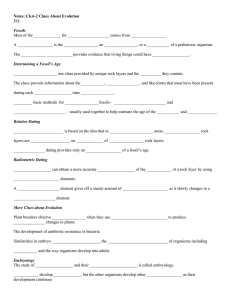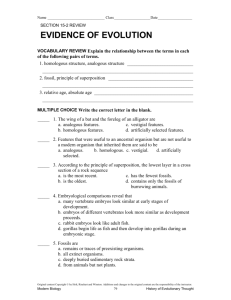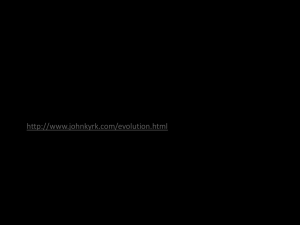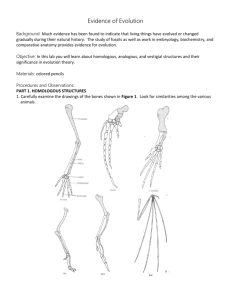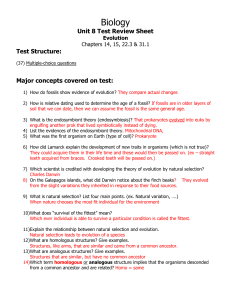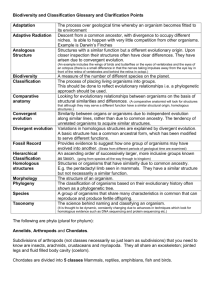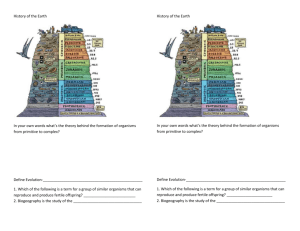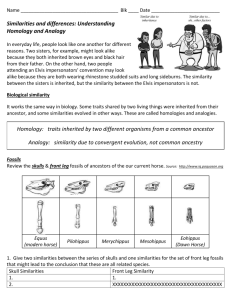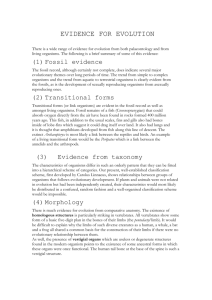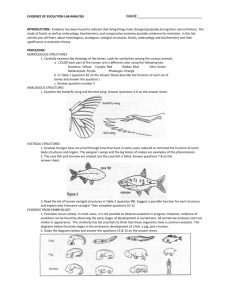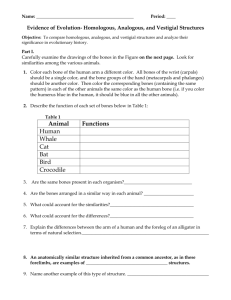evolution-lab-2
advertisement
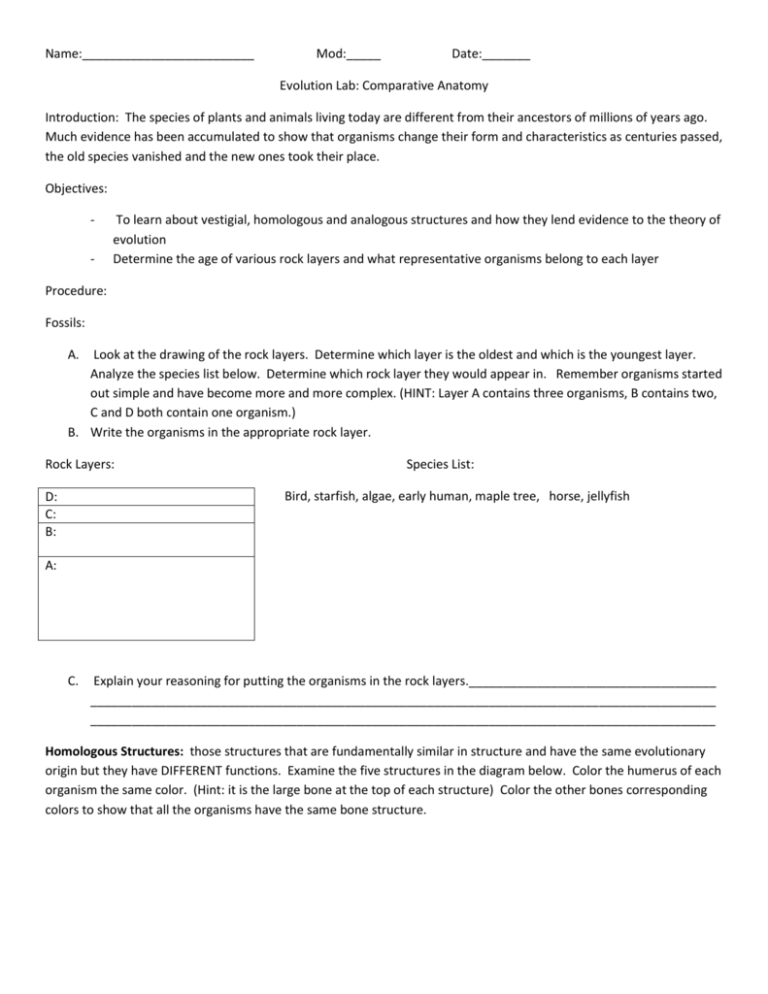
Name:_________________________ Mod:_____ Date:_______ Evolution Lab: Comparative Anatomy Introduction: The species of plants and animals living today are different from their ancestors of millions of years ago. Much evidence has been accumulated to show that organisms change their form and characteristics as centuries passed, the old species vanished and the new ones took their place. Objectives: - To learn about vestigial, homologous and analogous structures and how they lend evidence to the theory of evolution Determine the age of various rock layers and what representative organisms belong to each layer Procedure: Fossils: A. Look at the drawing of the rock layers. Determine which layer is the oldest and which is the youngest layer. Analyze the species list below. Determine which rock layer they would appear in. Remember organisms started out simple and have become more and more complex. (HINT: Layer A contains three organisms, B contains two, C and D both contain one organism.) B. Write the organisms in the appropriate rock layer. Rock Layers: Species List: Bird, starfish, algae, early human, maple tree, horse, jellyfish D: C: B: A: C. Explain your reasoning for putting the organisms in the rock layers.____________________________________ ___________________________________________________________________________________________ ___________________________________________________________________________________________ Homologous Structures: those structures that are fundamentally similar in structure and have the same evolutionary origin but they have DIFFERENT functions. Examine the five structures in the diagram below. Color the humerus of each organism the same color. (Hint: it is the large bone at the top of each structure) Color the other bones corresponding colors to show that all the organisms have the same bone structure. D) Describe the FUNCTION of each set of bones: Arm:______________________________________________________________________________________________ Lion Leg: :__________________________________________________________________________________________ Bat Wing: :_________________________________________________________________________________________ Bird Wing: :________________________________________________________________________________________ Whale Flipper: :____________________________________________________________________________________ Analogous Structures: structures that have the SAME function but different basic compositions and different evolutionary origin but similar functions. E) What function do they share? ____________________________________________________________________ F) How do the structures differ?_______________________________________________________________________ Vestigial Structures: structures that do not appear to have any function but which seem to be derived from useful structures in ancestral forms of life. Gradual changes have occurred through time that have in some cases reduced or removed the function of some body structures and organs. The penguin’s wings and the snake’s leg bones are examples of this phenomenon. Examine the diagrams of the cave fish and the minnow. These fish are related but the cave fish is blind. G) Explain why eyesight is not an important adaptation to life in a cave. __________________________________________________________________________________________________ __________________________________________________________________________________________________ H) Below is a list of human vestigial organs. Suggest a possible function for each and explain why the organism is now vestigial. “Wisdom” Teeth:___________________________________________________________________________________ Appendix:_________________________________________________________________________________________ Coccyx (fused tail bone) :_____________________________________________________________________________ Conclusion and Discussion: 1) Define the following and give an example of each: a. Homologous Structure:__________________________________________________________________ _____________________________________________________________________________________ b. Analogous Structure:____________________________________________________________________ ____________________________________________________________________________________ c. Vestigial Structure:_____________________________________________________________________ ____________________________________________________________________________________ 2) Explain the evolutionary relationship between the fin of a fish and the flipper of a whale. ___________________________________________________________________________________________ ___________________________________________________________________________________________ 3) How can we account for the presence of such useless structures in the human body such as the appendix? ___________________________________________________________________________________________ ___________________________________________________________________________________________ 4) Why might unrelated organisms evolve organs with similar structures? ___________________________________________________________________________________________ ___________________________________________________________________________________________
